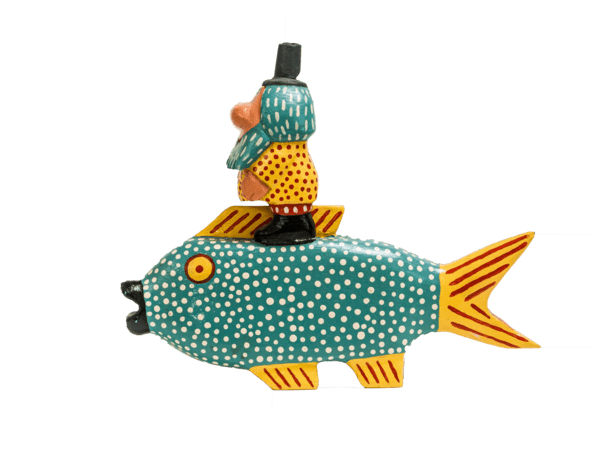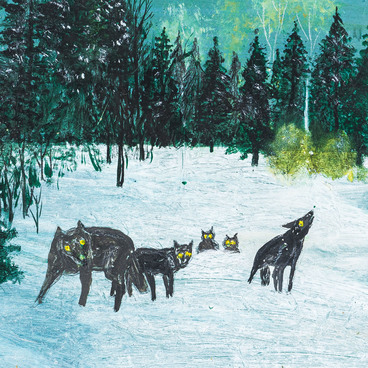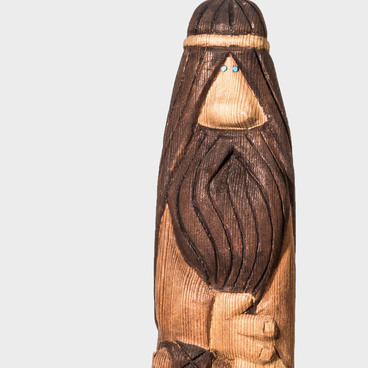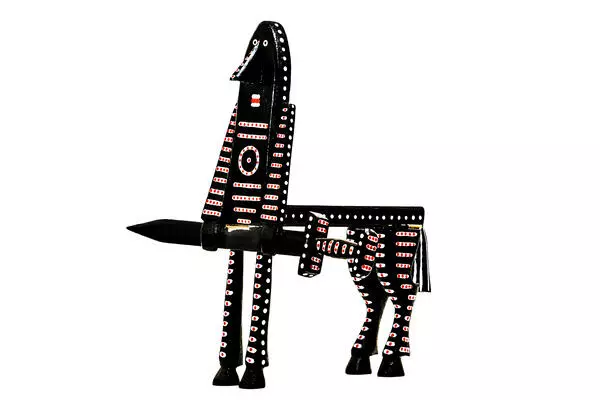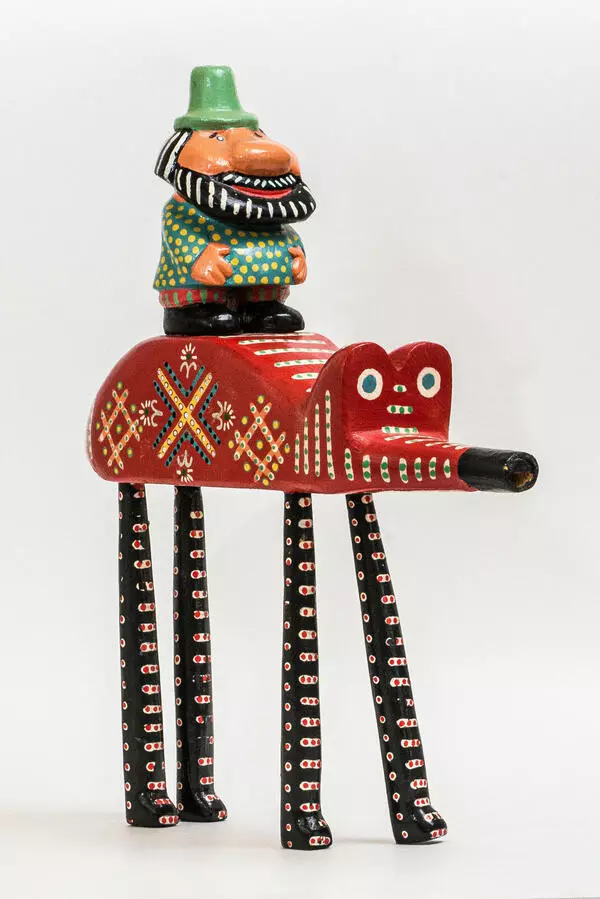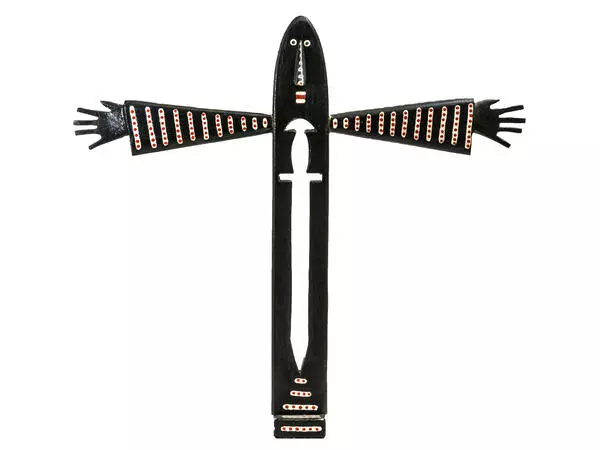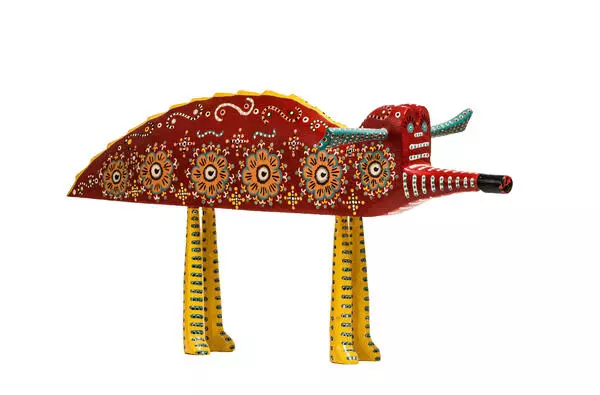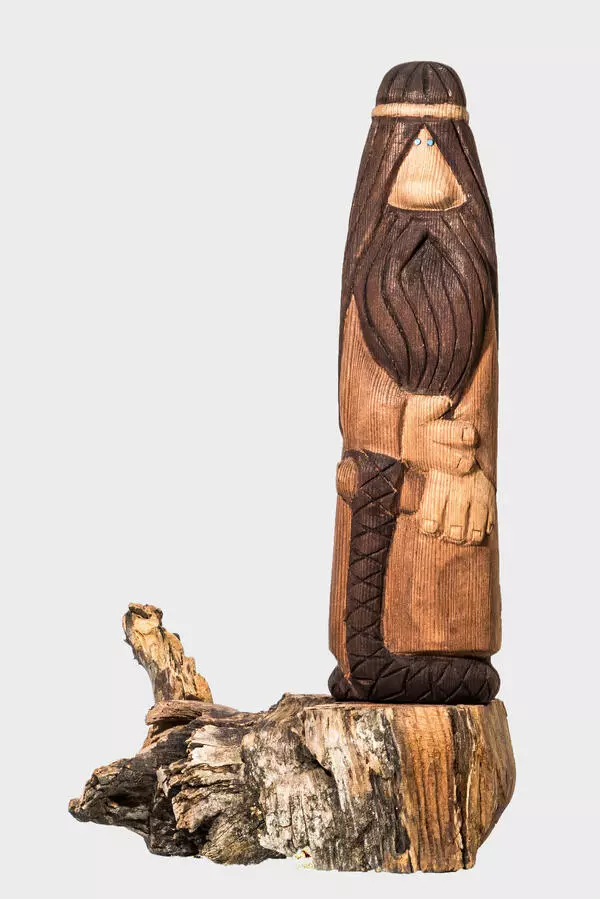One of the largest collections of toys in Russia by the sculptor Nikolai Zykov is housed in the funds of the ‘Gamayun’ Museum Center. His works are presented in many museums in Yekaterinburg, they can be found in Sergiev Posad, Suzdal and Moscow, as well as in the Museum of Man — the anthropological branch of the National Museum of Natural History in Paris.
The work of Nikolai Zykov was based on Slavic mythology and traditions of Russian folk toys. The craftsman did not copy the works of other artists, but redesigned archetypal images. To keep them recognizable, he used traditional motives, lines and decor details typical of the Kargopol and Romanov folk toys.
The composition ‘Male Water Spirit on the Fish’ is made of wood and looks like a two-figured whistle. Masters of folk art created such musical toys in the old days: they were mostly molded from clay, painted with multi-colored glaze and fired in a kiln.
Usually whistles were made with an internal cavity and two to four holes for the fingers. But there were also figurines with a whistle attached, for example Filimonovo toys.
The position of the water spirit and fish figurines also refers to the motives of folk toys. They were often created in the form of horsemen by the masters of the Kargopol, Filimonovo, Dymkovo, and Abashev schools.
In East Slavic mythology, the water spirit was represented as an old man. He could be either small or unnaturally tall, with very long legs or a fish tail, with a gray or green beard reaching down to his knees. Sometimes he had a thick green mustache and a red shirt over his shoulders.
At the bottom of rivers and lakes, the water spirit grazed herds of catfish, carp, bream, burbot and other fish — and could ride them. Most often, the water spirit managed to saddle the catfish. The people called this predatory fish the devil’s horse.
The inhabitants of the same world — the water spirit and the miracle fish — have a similar color in Nikolai Zykov’s toy. The body of the fish is covered with blue paint with a small white dot, and due to this it seems light. White dots on a blue background are reminiscent of scales or air bubbles in the water that move around a rapidly swimming fish.
The extremely generalized volume, the absence of additional elements and the redundancy of decor give Nikolai Zykov’s ‘Male Water Spirit on the Fish’ an archaic look.
The work of Nikolai Zykov was based on Slavic mythology and traditions of Russian folk toys. The craftsman did not copy the works of other artists, but redesigned archetypal images. To keep them recognizable, he used traditional motives, lines and decor details typical of the Kargopol and Romanov folk toys.
The composition ‘Male Water Spirit on the Fish’ is made of wood and looks like a two-figured whistle. Masters of folk art created such musical toys in the old days: they were mostly molded from clay, painted with multi-colored glaze and fired in a kiln.
Usually whistles were made with an internal cavity and two to four holes for the fingers. But there were also figurines with a whistle attached, for example Filimonovo toys.
The position of the water spirit and fish figurines also refers to the motives of folk toys. They were often created in the form of horsemen by the masters of the Kargopol, Filimonovo, Dymkovo, and Abashev schools.
In East Slavic mythology, the water spirit was represented as an old man. He could be either small or unnaturally tall, with very long legs or a fish tail, with a gray or green beard reaching down to his knees. Sometimes he had a thick green mustache and a red shirt over his shoulders.
At the bottom of rivers and lakes, the water spirit grazed herds of catfish, carp, bream, burbot and other fish — and could ride them. Most often, the water spirit managed to saddle the catfish. The people called this predatory fish the devil’s horse.
The inhabitants of the same world — the water spirit and the miracle fish — have a similar color in Nikolai Zykov’s toy. The body of the fish is covered with blue paint with a small white dot, and due to this it seems light. White dots on a blue background are reminiscent of scales or air bubbles in the water that move around a rapidly swimming fish.
The extremely generalized volume, the absence of additional elements and the redundancy of decor give Nikolai Zykov’s ‘Male Water Spirit on the Fish’ an archaic look.

